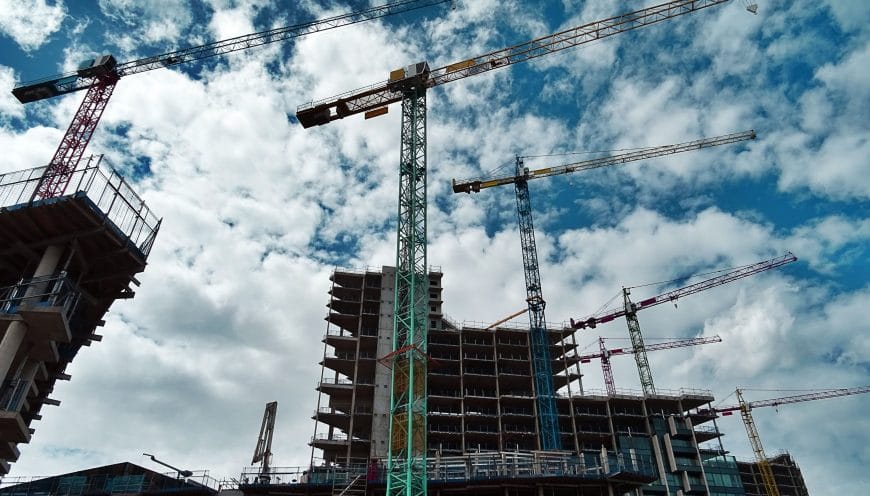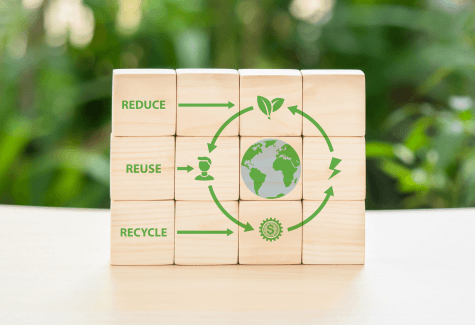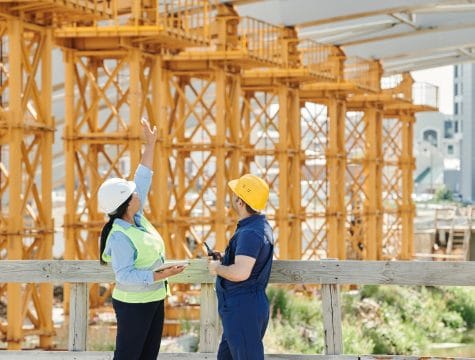Last year Circular Berlin took part in a big project run together with EIT Climate-KIC, building a circular construction ecosystem in Berlin.
Of course building the ecosystem is not a one year task, it is a long way to go, but we are glad to keep the ball rolling. During 2019 Circular Berlin ran 18 interviews with diverse experts from architecture, material development, construction project development and construction waste recycling to identify leverage points in Berlin’s construction sector, which stakeholders can use to enable a circular economy. You can download the complete report from the Climate-KIC webpage.
Construction trends in Berlin
Berlin is a booming construction capital. New construction in Berlin keeps growing steadily, mainly through residential dwellings. 50,000 new dwellings are planned by 2030, about 26,000 by 2021. In 2017, in total 49,605 construction sites planned for residential dwellings, where private housing companies and cooperatives played a key role in their development. Nevertheless, the topic of sustainability in construction remains an important topic for Berlin Administration. Yes, currently it concerns mainly public buildings: public calls for tenders include demand for sustainable construction, using the BNB certification, but they don’t necessarily call for circularity. Another trend which gain increased interest in Berlin is wood construction. Thus, a large investment will be focused on schools until 2026 with renovation of existing buildings and new constructions including fast wooden lightweight construction. Estimated overall investment: €5.5 billion. Also in 2019, the first Berliner Holzbaupreis 2019 was offered, where 58 projects were submitted for in the categories of New construction, Refurbishment and Upgrading, and Concepts, realised in Berlin over the past 15 years. All these are positive development, but how does it fit in total with the topic of circular economy?
If we look at the Berlin waste balance, we can see that more than 60% of the whole waste in 2016 was coming from construction and demolition. Due to this significant waste fraction, the Berlin Senat for Environment, Transportation and Climate paid a lot of attention to the construction waste problem in its Waste Management concept 2020-2030. Growth in the fraction soil and stones, compared to 2012 (17 wt.%) was contributed among other things, by the growing number of new residential and non-residential buildings.
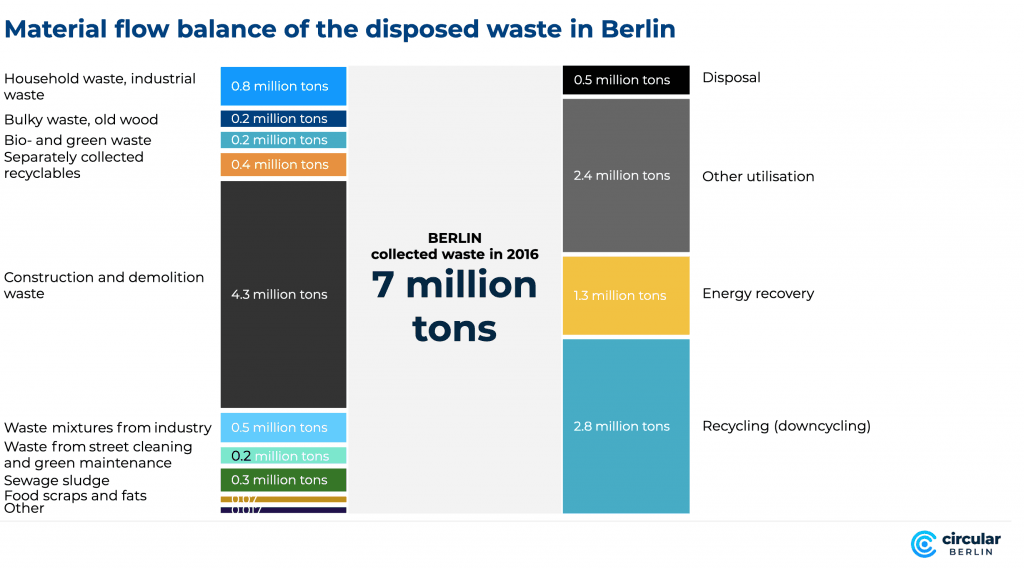
Berlin’s view on the topic of circular construction
Through our interviews the topic of circular construction was seen quite differently. But it was common that the understanding of the circularity in it goes far beyond waste. The topic of circular construction was associated with material use and sourcing, building operation, space use and different processes needed in design.
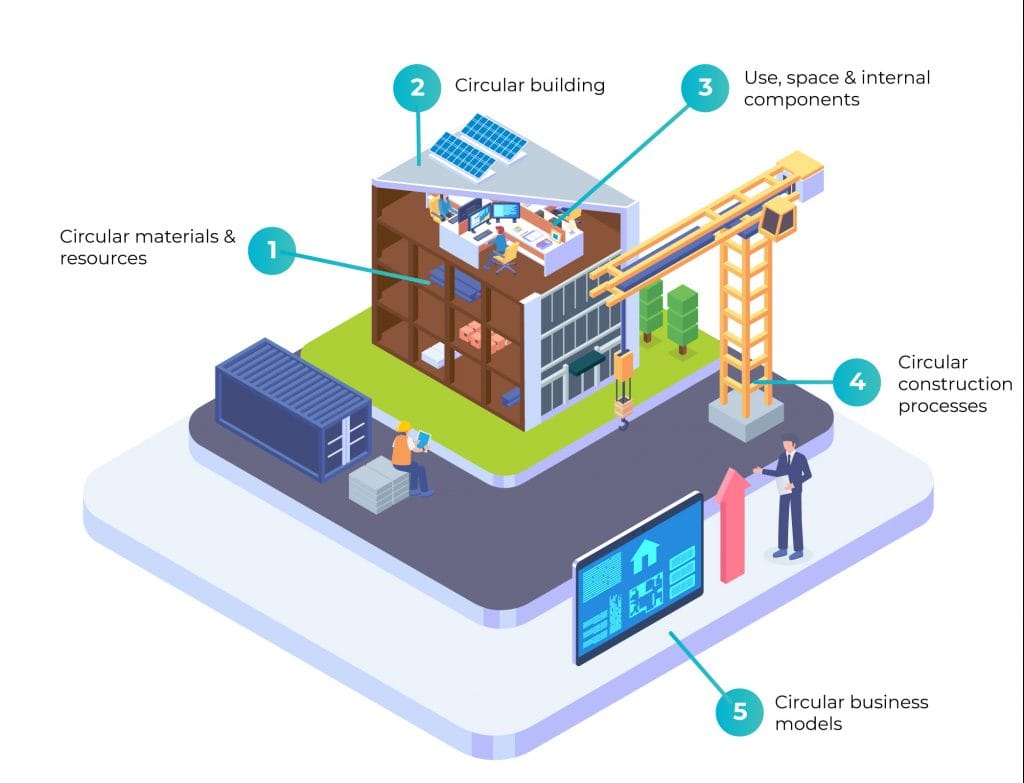
Nevertheless, it was clear that Berlin is still in the beginning of its journey to become circular in the construction sector. Most of the interviewees highlighted that limited knowledge access, no communication or demand for the topic remains the main challenge to make it a mainstream industry approach. Another challenge that we all need to work with, is building a business case for the circular construction projects, to make it economically attractive for the industry players. Even though current market gaps prevent development of a fully compatible circular business case, right market incentives are needed. This starts from the corresponding incentives for architecture work (payment not per volume of the project but for the sustainable solutions in the project), as well as tax reduction for the rescued materials during the refurbishment projects. ast but not least is the lack of expertise to work with reused materials or relevant resources (materials) and facilities shows the market gaps to scale up the approach.
Action plan to bring us forward
Challenges are always there, but what we however need to do to overcome them! Circular Berlin developed 9 actions, to make a shift towards circular economy in the construction sector in Berlin:
I. Provide extensive knowledge access to the topic of circular construction, its methods and know-how, to raise market awareness and demand for circular construction.
II. Create a definition for circular construction that is generally understandable, recognisable and acceptable.
III. Relax building norms and focus regulation on supporting and incentivising innovative work in construction, to promote the use of circular materials (renewable and secondary materials).
IV. Use public instruments suchas public procurement and tax breaks to incentivise demand for projects in circular construction, as well as private financial instruments to fuel construction with circular principles.
V. Develop and establish widely used alternative project calculation methods prioritising a building’s operational costs and considering life cycle costs of materials and components.
VI. Support, collaborate and innovate to establish new and scalable business models for circular construction to foster the efficient and sufficient use of materials, components and spaces.
VII. Educate and prepare a new generation of professionals (architects, planners and craftsmen) who embrace sustainable construction practices, and can work with circular materials as well as provide infrastructure and facilities needed for circular construction needs.
VIII. Make use of circular materials such as renewable, reusable and recyclable and health factors are the key elements for the realisation of construction projects.
IX. Innovate with new technologies that can minimise the impact of current materials, improve usability of reused materials and bring transparency into the supply chain through traceability, into the processes and the industry.
For more details the action plan, please check out the Bericht
This is just the beginning of our work, but we strongly believe that with collaboration and coordinated city actions we can make a shift in such a challenging but exciting industry as a built environment.

